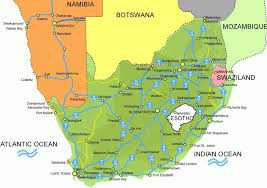Monday, January 25, 2016
Swaziland
Swaziland is a country in Africa roughly the size of New Jersey. About 3/4 of it is bordered by South Africa on the north, south, and west (and a little bit on the east), and the remaining eastern border is with Mozambique.
The largest city and administrative capital of Swaziland is Mbabane, while the city of Lobamba is the legislative capital, and seat of the Parliament. The population is roughly 1,119,000, and it is an absolute monarchy. The king appoints 10/65 members of parliament as well as the Prime Minister. He can veto any legislation, as well as can make laws by decree.
Swaziland was formed when a number of Bantu clans broke away from the main tribe in the 1500s and settled in this area. They eventually united to formed a tribe in the 1800s to be stronger against their common enemy, the Zulu. Swaziland was a protectorate of South Africa in the 1880s, but then fell under English domain after the Boer war in the early 1900s. In 1969 it became fully independent.
Though Swaziland is a relatively small country, it has many geographic features, including mountains, flat plains, and rainforest. About 75% of the population are subsistence farmers, and the main exports are soft drink concentrates, sugar, wood pulp, cotton yarn, refrigerators, citrus and canned fruit.
FUN FACT: Ngwenya Mine, the oldest mine in the world, is located in Swaziland. Stone Age people mined hematite to extract red ochre in this mine.
UN-FUN FACT: Swaziland has the highest incidence of HIV rates of adults in the world.
Labels:
Africa,
Southern Africa
Subscribe to:
Post Comments (Atom)



No comments:
Post a Comment